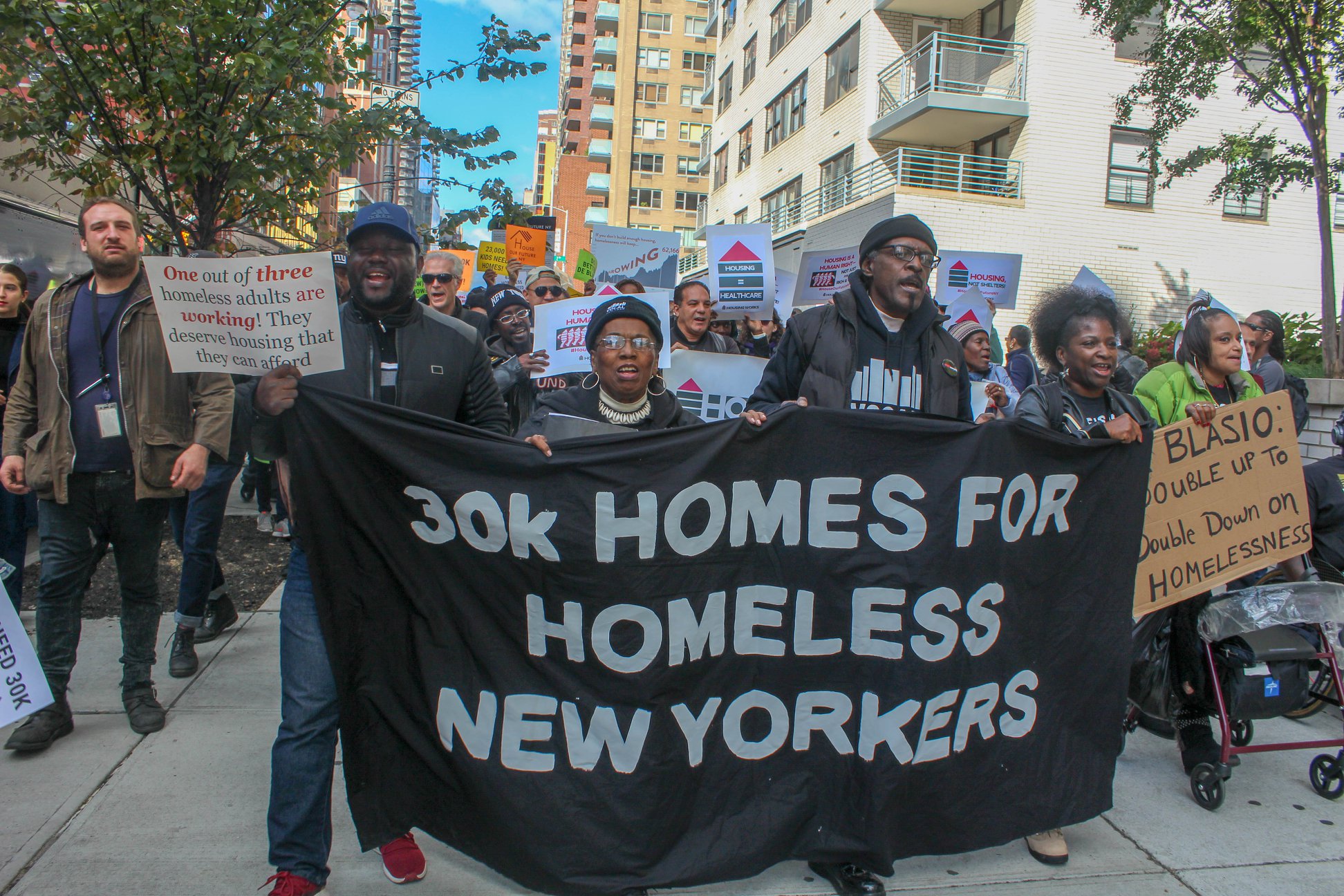Imagine a homeless family of three fortunate enough to receive a rental assistance voucher from the city of New York. The voucher is supposed to help you pay for rent on an apartment, similar to the federal Section 8 program.
But the CityFHEPS voucher currently only pays up to $1,580 per month on a two bedroom apartment. The homeless family searches throughout the north Brooklyn neighborhoods of Bedford-Stuyvesant, Bushwick, Crown Heights, Cypress Hills, and East New York…to discover that finding a two-bedroom for under $1,600 is nearly impossible.
They now have to consider locations farther and farther into the city’s outskirts, away from the downtown business districts dense with employment opportunities and away from the familiar neighborhoods where they were born and raised. Perhaps they finally find a place they can afford on Flatlands Avenue in Brooklyn, or Rockaway Boulevard in Queens, with no easy access to subways.
The average time a family spends searching for a home with the CityFHEPS housing voucher is three months. All this time, children likely go without a safe bed to sleep in at night, or a kitchen to make their own breakfast, or even a coffee table to do their homework.
New York City has over 83,200 homeless people as of January 2019. That includes over 68,100 in the shelter system alone, and 3,900 living on the street. This humanitarian crisis is finally demanding action from top lawmakers, among them City Council Speaker Corey Johnson and City Comptroller Scott Stringer. Both are considered potential contenders for the 2021 New York mayoral race.
Last week on January 30, Johnson and the City Council released a plan to both reduce current homeless rates and prevent people from becoming at risk in the future. The proposal is over 200 pages and 90 policies long and was developed over 18 months, they claimed. The Council proposes to create a new office for a deputy mayor for affordable housing.
One of Johnson’s key proposals is to increase the value of the city rental vouchers from the maximum of $1,580 to a “fair market rate” of $1,951. Johnson called on the state government to fund this increase by creating a statewide subsidy, which Cuomo opposes. But in the absence of action from Albany, the City will fund the vouchers from its own budget.
This would cost New York $236 million over five years, but also save about $400 million in spending on cluster shelter sites and commercial hotels to temporarily house people. “These locations notoriously lack appropriate services and cost more than purpose-built shelter and permanent housing,” the report states. “The City should aggressively move to end the practice of using hotels and cluster sites to provide shelter.”
Meanwhile, Stringer released an audit last month that found massive inefficiencies and losses from New York’s HomeBASE program. HomeBASE, run by the Human Resources Administration (HRA), works with local nonprofits to provide essential services to people at risk of homelessness.
Stringer’s audit states that HomeBASE is losing money, not tracking people who sign up, and failing to keep good records. Over 18 months, the HRA reviewed only one third of all case files submitted.
Stringer’s office found inconsistencies in 68 percent of the cases that were reviewed by HRA. These included benefits going to people who should not have qualified because they had a higher income. Worse, the city lost $2.2 million in advance payments to contractors that it has not yet recouped.
“There’s a human cost to the city’s failures,” he told the New York Daily News. “If we don’t keep track of the resources that are intended to help vulnerable New Yorkers, the very people we must lift up fall through the cracks.” The HRA rejected the Comptroller’s analysis as “off-base”.
Then last week on January 29, Stringer released his own housing plan to reduce homelessness. He proposed requiring one in four units in new housing developments to be permanently low-income affordable. This ‘Universal Affordable Housing’ would be set at an average of 60 percent of the Area Median Income, a household income of $58,000 a year for a family of three.
Stringer’s plan also proposed using vacant lots to build affordable housing, and ending the 421-A tax break. 421-A is a property tax deduction given to real estate developers in New York building multi-family housing. Stringer estimated that New York loses $1.6 billion in revenue each year from this deduction.
As New Yorkers enter an election year where they will cast votes for members of the State Senate and Assembly, and look towards 2021 when they will elect their next Mayor, politicians will continue to focus on the omnipresent homelessness crisis. At the same time, housing rights and homeless advocates will remain vigilant that those in power who promise “affordable housing” implement real solutions.
Photo from VOCAL-NY via Facebook.





Show Comments